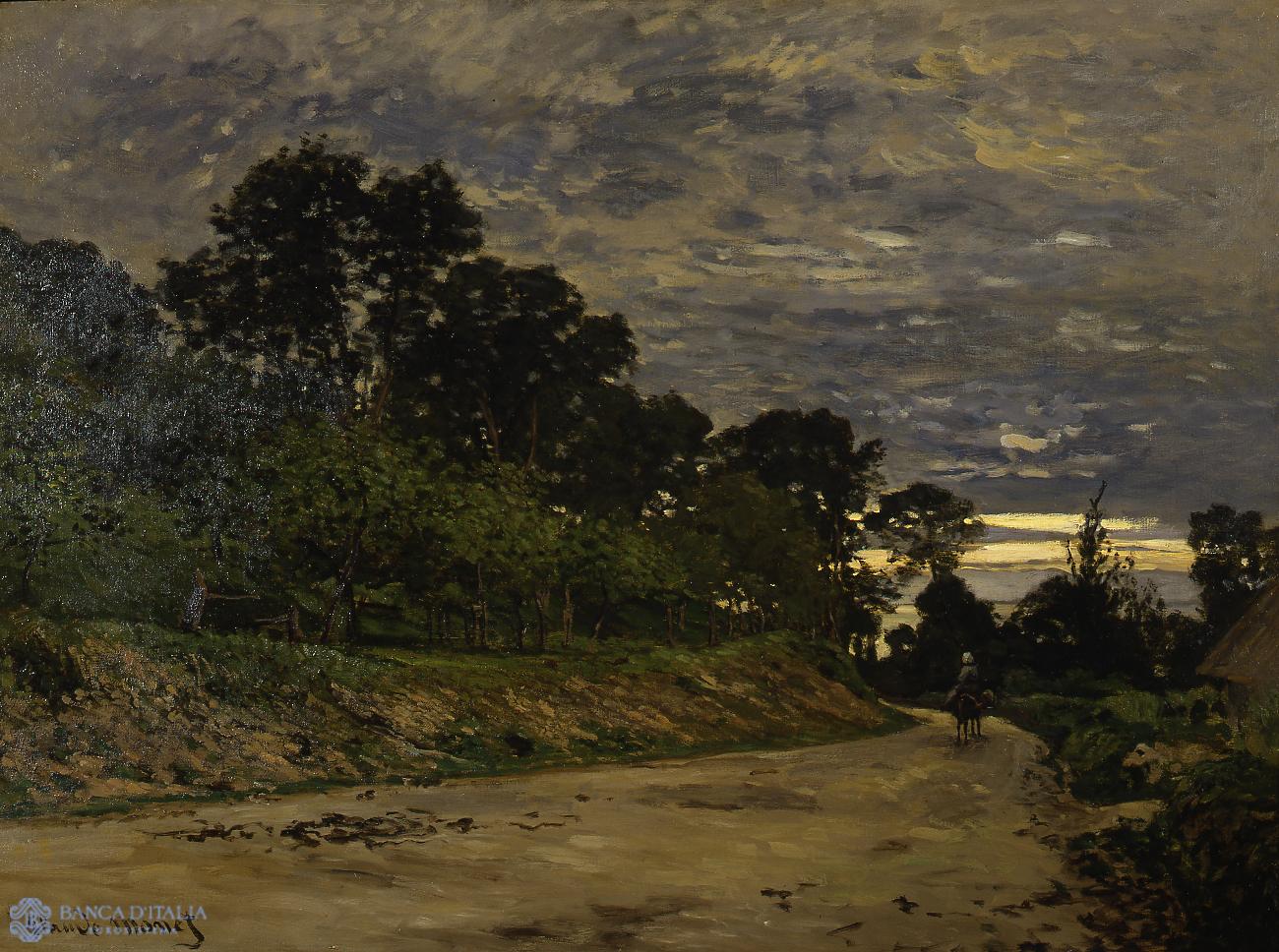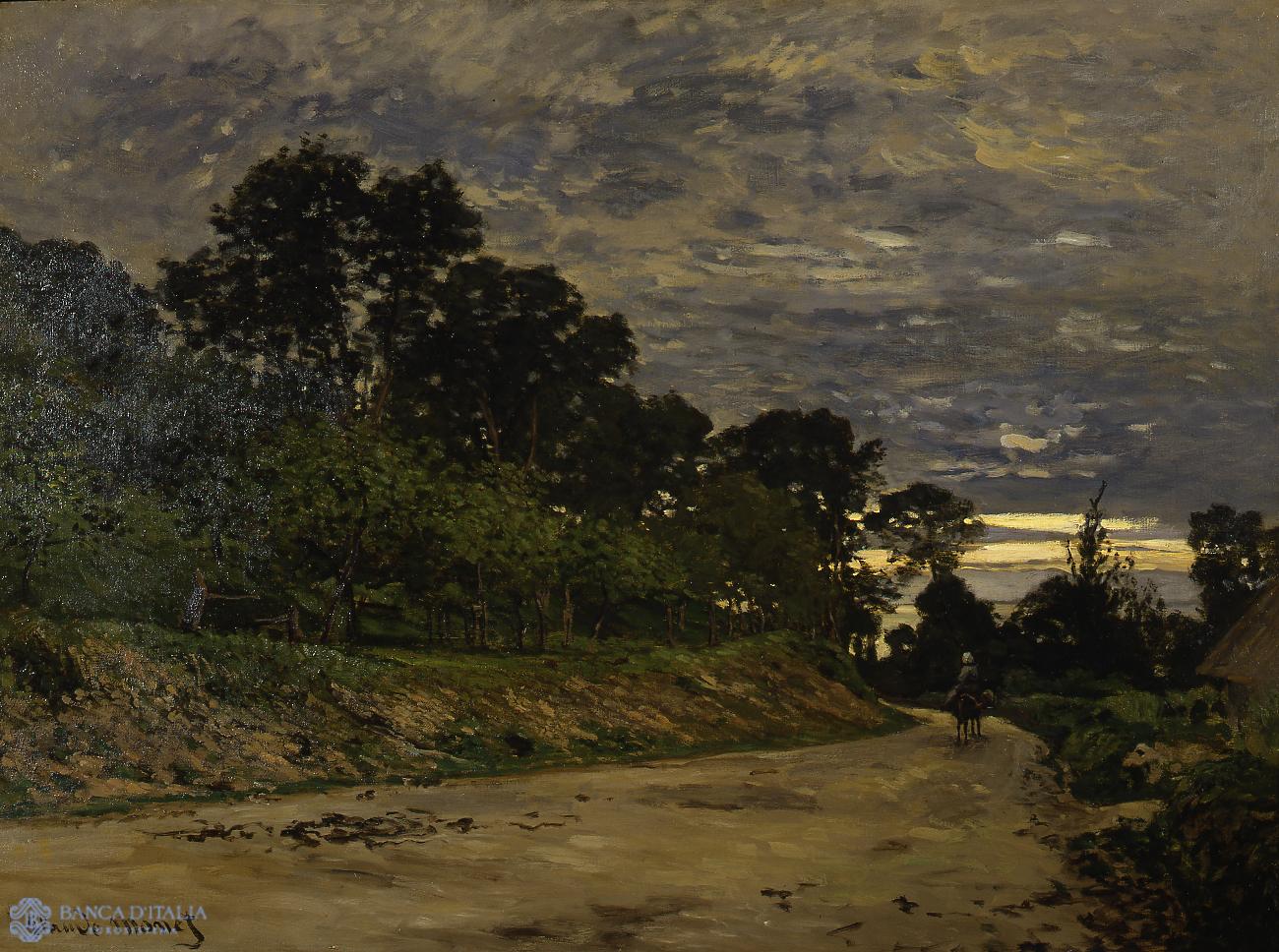Claude Monet was born in Paris in 1840 and died in Giverny in 1926. A leading figure in the Impressionist movement, he played a vital role in the group’s promotion. “These artists,” wrote Zola in his presentation at the 1880 Salon, “propose to leave the studio, where painters have immured themselves for centuries, to go and paint in the open air where the light is no longer unique, and its effects are multiple.” This study of the light in its thousand decompositions and recompositions is what we call Impressionism, because a picture becomes the impression of a moment experienced in nature.” Monet spent his adolescent years in Le Havre where in 1858 he met Eugène Boudin, who persuaded him to go to Paris to study painting. In 1862 he returned to Le Havre where with Boudin and Jongkind he resumed his study of nature under the effects of light. Back in Paris, he attended Gleyre’s studio, where he met Renoir, Sisley and Bazille. However, at the time the artist was enamoured of the cruder painting of Courbet – so much so that he joined the artists of the Barbizon school in Fontainebleau. He subsequently resolved to devote himself exclusively to landscape painting, moving back to Normandy and specifically, Honfleur, in the company of Boudin, Jongkind and Bazille. The first images painted en plein air date from 1865, the year in which he debuted at the Salon. By the following year he had already achieved notable acclaim, although he continued to struggle economically. In Holland in 1870, he there began one of the most successful periods of his life. Returning to France, he prepared his first exhibition of the Impressionists from Argenteuil, held in 1874 in the Parisian studio of the photographer Nadar. The group took its name from his painting Impression, Soleil levant and presented a united front at the exhibitions of the Salons from 1876 to 1879. From 1880 onwards, however, its members went their separate ways and, convinced that the analysis of the light corresponded to his deepening vision of nature, Monet held his first solo exhibition at La Vie Moderne, later spearheading the Impressionist movement with his series of “stations”, “cathedrals” and “water lilies”.
In 1881, following the death of his son Michel, he left his family to live with Alice Hoschedé. They moved to Giverny, where he stayed until his death, with occasional trips to France, Italy and the Netherlands.
Claude Monet
Claude Monet (Paris 1840 - Giverny 1926)
19th century AD


